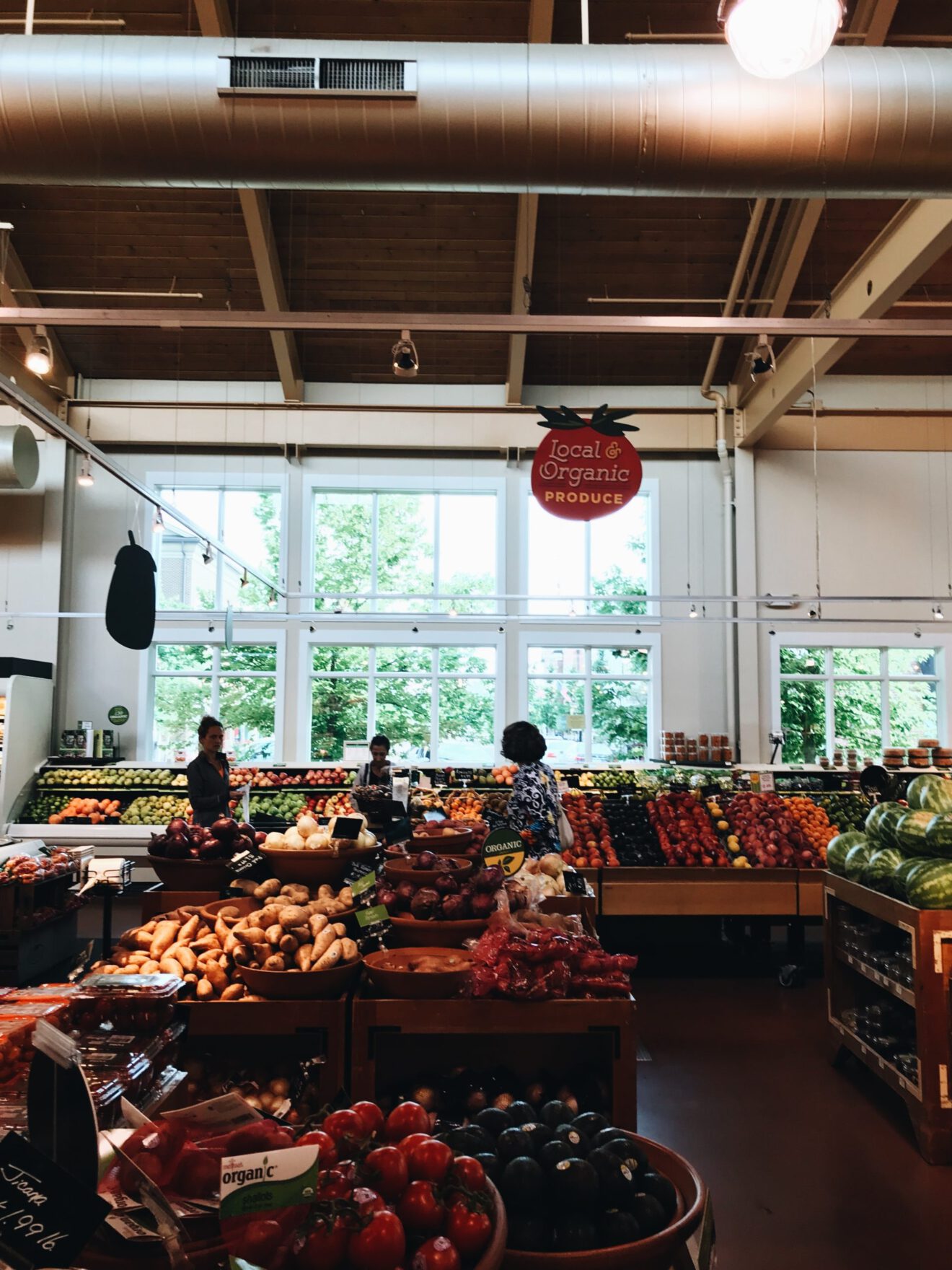Sign up for the FMI dailyLead today, free.
As consumers emerge into a semi-post COVID world, the specifics of how they procure foods, beverages and meals for themselves and their households remains a rich topic reflective of complex events and always evolving lifestyle needs. In step with these trends, findings from our latest report, Food Sourcing in America 2022 document how there’s been a permanent shift to online food shopping simultaneous with a majority of shoppers returning en masse to food retail stores for in-person grocery shopping.
In the semi-post COVID-19 environment, consumers traverse today’s hybrid world of in-store and online grocery shopping and expect to move fluidly across shopping methods and channels. Shoppers are returning almost in totality to shop in person in food retailers, while at the same time embracing a permanent shift to use of online grocery services: 99% of shoppers in our study say they’ve shopped in a grocery store in the past 30 days, and 63% say they shopped online in the past 30 days. With regard to use of digital food shopping resources, in 2020, online shopping was near universally embraced as a means of preventing exposure to COVID-19 while acquiring necessities. Shoppers today appreciate the continued safety that online shopping provides with 62% of shoppers still concerned (25% highly, 37% somewhat) about getting COVID-19 while shopping.
While factors such as COVID-19 and safety still impact food shopping, inflation is a significant influence on food and beverage decisions. Shoppers say they are cutting back in different ways on food shopping due to the effects of inflation and depending on demographics. While inflation impacts everyone, those at lower income levels are the ones who have had to rethink how they live, what they buy, and how they shop. Among shoppers who say they’ve noticed rising prices, behavioral changes are most likely among those in lower-income households where almost half (47%) note that they have had to rethink how they shop for groceries compared to just one-quarter (25%) of upper-income households. Other inflation-related factors and behaviors include:
- Gas prices have been the most obvious sign of inflation to consumers; they impact frequency of shopping, and shoppers are visiting fewer stores per trip.
- To manage rising food and beverage prices, shoppers report buying more store brands, looking for deals and less expensive options, and buying in bulk.
- Use of coupons, purchasing BOGOs, and use of loyalty programs are additional strategies to make food budgets stretch further.
With regard to channel loyalty, the Food Sourcing in America report finds that shoppers are mostly channel-agnostic, and that they use multiple stores and shopping methods to fulfill their needs. However, mass and grocery are the leading retail channels for food and beverage procurement, and mass is now a bona fide food and beverage store in shoppers’ minds. Though this was not always the case, mass now competes more strongly with grocery.
Despite feeling economically constrained, shoppers are still sourcing from foodservice although they are trading down from full-service to fast-casual and QSR restaurants on some occasions. Shoppers also rely on fresh prepared foods from retail, but they view these offerings as non-equivalent with restaurant foods and beverages, so fresh prepared foods from retail tend to compete with restaurants on functional (e.g., too tired to cook) or price-sensitive (e.g., feeding a crowd) occasions.
Opportunities ahead for food retailers and foodservice operators
As the COVID-19 pandemic wanes, shoppers still have the same complex set of considerations around where, how and when to shop, and all journeys begin with what they need or want to purchase. Almost all shoppers shop in person some of the time, and some shop exclusively in person. However, exclusive reliance on online methods is very rare.
Inflation and high prices have replaced contracting COVID-19 as shoppers’ primary concern when it comes to procuring foods/beverage in 2022. Shoppers have been creative and resourceful, employing a wide variety of strategies to continue to feed themselves and their families in the way that they want in the face of dwindling food/ beverage budgets. Retailers and foodservice providers have an opportunity to be bigger allies in shoppers’ fight against inflation. Doubling down on investments in products (e.g., private brands) and programs (loyalty programs, fuel rewards, etc.) that shoppers find helpful is recommended as shoppers will reward retailers for their empathy and support.
For food retailers, innovation in private brands focused on premium health attributes is an especially strong opportunity as shoppers lament having to forgo healthy options to stay on budget. And turning to private brands is the number one strategy that shoppers have employed to manage rising prices.
Beyond tactical considerations, these challenges for consumers also represent opportunities for companies to develop greater clarity and purpose around their missions, values and priorities as providers of vital, basic needs. Prioritizing access is one potentially powerful way for retailers and foodservice operators to engender stronger relationships with shoppers by making it easier and more affordable to meet important needs.
Read more from SmartBrief:
- Emerging brands shine at pop-up food retailers
- Smart labels, sustainability and food safety: What’s new, now and next in food packaging innovations
- Pet-friendly restaurants must consider both rules and rewards
As CEO of The Hartman Group, Demeritt drives the vision, strategy, operations and results-oriented culture for the company’s associates as The Hartman Group furthers its offerings of tactical thinking, consumer and market intelligence, cultural competency and innovative intellectual capital to a global marketplace.
________________________________________________
If you liked this article, sign up for SmartBrief’s free email newsletter from the Food Industry Association. It’s among SmartBrief’s more than 250 industry-focused newsletters.
